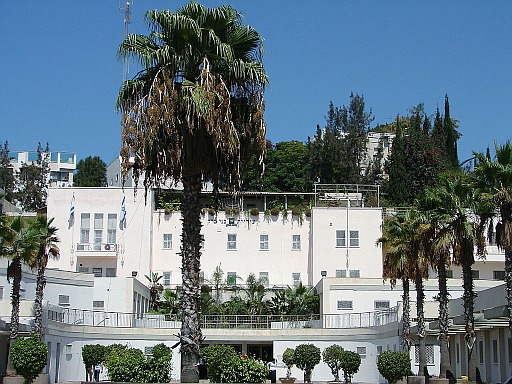A report from the Central Bureau of Statistics regarding cities in Israel shows that at the end of 2017, the Israeli population stood at 8,797,000 residents of which 74.8% lived in cities. The density stood at 387.4 [people] per each square kilometer. There are 235 local authorities in Israel in 77 towns. There are 124 local councils and 54 district authorities. Sixteen Israeli cities have over 100,000 residents. The latest one to join this list is Kfar Saba.
Rabbi Akiva Street in Bnei Brak

The report notes that Bnei Brak is the most densely populated city. Modi'in Illit [Kiryat Sefer] has the most percentage of children in its population while the city with the oldest population of residents aged 75 and up is Bat Yam.
Yerushalayim is by far the most populous city with 901,300 residents. Next is Tel Aviv with 443,900, followed by Haifa with 281,100.
Yerushalayim is the city with the greatest negative immigration of residents leaving it. During that period, 11,000 residents settled in, mostly coming from Bnei Brak, but 17,000 people left the city, most of them relocating to Tel Aviv.
Even thus, Tel Aviv has a negative flow of its residents. 21,000 people moved to Tel Aviv, mostly from Ramat Gan, while 23,000 left it, surprisingly, for Ramat Gan.
In most cities there are slightly more women than men. In Yerushalayim there are 448,900 men to 452,400 women. In Tel Aviv there are 223,900 women to 220,000 men, and in Haifa 145,800 women to 135,300 men. Given that women tend to live longer, this is not a big imbalance. In Bnei Brak there are actually more men: 99,000 men to 94,800 women.
Bnei Brak City Hall by Aviad

The Central Bureau of Statistics also examined which cities have the greatest population density. Bnei Brak tops the list with 26,368 residents per square kilometer. Givatayim follows it and then, Bat Yam, Kiryat Motzkin, Holon, Givat Shmuel, Ramat Gan, Kiryat Ono, Kiryat Yam and Tel Aviv.
To expand on the information, we find that the city with the least density is down south, Dimona, with only 194 residents per each square kilometer, though one must factor in the fact that the city's area includes tracts of industrial enterprise and large plots of Negev arid land. Other cities with a low population density are Arad and Eilat in the south, Tamra, and Tsefat up north.
The CBS examined which cities are the youngest, where we find these to be chareidi cities: Modi'in Illit tops the list with 64.4% of its residents under the age of 18; Beitar Illit with 61.4% of residents under 18; Elad, with 59.2%; Beit Shemesh with 52.1% under eighteen, and the fifth, the Bedouin city of Rahat, with 51.6% of residents under 17.
The fertility rate for Israel as a whole is 3.11 children per woman. This is among the highest in the developed world. The city with the highest fertility is Modi'in Illit with 7.67 children per woman.




